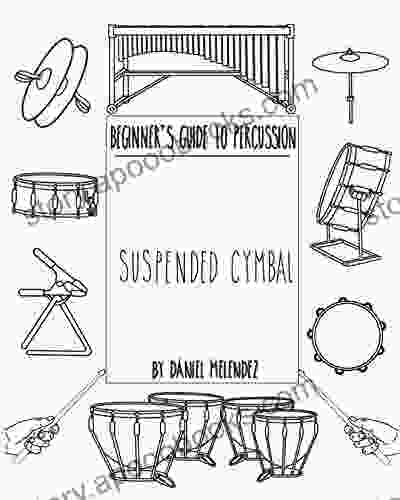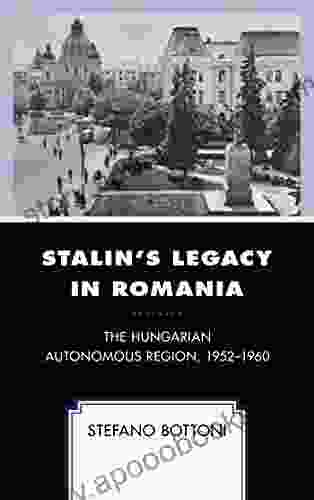Unveiling the Secrets of the Hungarian Autonomous Region: A Journey into the Cold War

In the heart of Europe, nestled amidst the tumultuous events of the Cold War, lay a forgotten chapter of history—the Hungarian Autonomous Region. This enigmatic entity, established in 1952 and dissolved in 1960, remains shrouded in mystery. Now, thanks to the declassification of Soviet archives and the meticulous research of historians, the veil of secrecy is being lifted, revealing a fascinating and complex story.
5 out of 5
| Language | : | English |
| File size | : | 19340 KB |
| Text-to-Speech | : | Enabled |
| Screen Reader | : | Supported |
| Enhanced typesetting | : | Enabled |
| Print length | : | 423 pages |
The Genesis of an Autonomous Region
In the aftermath of World War II, Hungary found itself under Soviet occupation. The communist regime established by Moscow sought to consolidate its power through a series of repressive measures, sparking widespread discontent and resistance among the Hungarian populace. In response to growing tensions, the Soviet Union conceived a plan to create an autonomous region within Hungary, populated by loyal communists and serving as a buffer zone against the West.
The Establishment of the Region
On July 2, 1952, a decree was issued by the Hungarian government, establishing the Hungarian Autonomous Region under the leadership of Mátyás Rákosi. The region encompassed a significant portion of northeastern Hungary, including the cities of Miskolc, Nyíregyháza, and Debrecen. The new autonomous region was granted its own government, parliament, and judiciary, ostensibly allowing it a degree of self-governance.
The Reality Behind the Facade
Despite the veneer of autonomy, the Hungarian Autonomous Region was firmly under the control of the Soviet Union. The Soviet military maintained a heavy presence in the region, while the local communist leadership was handpicked by Moscow. The region's economy, heavily dependent on Soviet subsidies, was closely intertwined with the Soviet sphere of influence.
The Hungarian Revolution and its Impact
The Hungarian Revolution of 1956 shook the foundations of the Autonomous Region. Spontaneous protests erupted in Miskolc and other cities, demanding democratic reforms and an end to Soviet influence. The Soviet Union responded swiftly, crushing the uprising with military force. In the aftermath of the revolution, the region was subjected to brutal reprisals, as communist authorities sought to quell any remaining dissent.
The Decline and Dissolution of the Region
The Hungarian Autonomous Region gradually lost its significance as the Cold War entered a period of détente. Economic reforms and political liberalization within Hungary undermined the region's raison d'être. In 1960, the Hungarian government, with the tacit approval of Moscow, abolished the Autonomous Region, reintegrating its territory into the rest of the country.
Legacy and Significance
The Hungarian Autonomous Region stands as a testament to the complexities and contradictions of the Cold War. It was an attempt by the Soviet Union to maintain control over a restless satellite state, while simultaneously granting the illusion of autonomy. The region's establishment, survival, and eventual dissolution provide valuable insights into the geopolitical strategies and ideological struggles that shaped this pivotal era.
Historical Analysis in "The Hungarian Autonomous Region 1952-1960"
The book "The Hungarian Autonomous Region 1952-1960: The Harvard Cold War Studies Book" offers a comprehensive analysis of this enigmatic region. Drawing on extensive research and newly declassified documents, the authors provide a nuanced understanding of its origins, development, and impact.
The book examines the interplay between Soviet and Hungarian interests, the role of local communist leadership, and the experiences of the region's inhabitants. It sheds light on the economic, social, and political dynamics that shaped the Hungarian Autonomous Region, and analyzes its significance in the broader context of the Cold War.
The Hungarian Autonomous Region is a captivating historical episode that continues to intrigue scholars and the public alike. Its story is a reminder of the ideological battles and geopolitical tensions that characterized the Cold War. Through the pages of "The Hungarian Autonomous Region 1952-1960," readers are invited to embark on a journey into this forgotten chapter, uncovering the secrets and complexities of a hidden past.
5 out of 5
| Language | : | English |
| File size | : | 19340 KB |
| Text-to-Speech | : | Enabled |
| Screen Reader | : | Supported |
| Enhanced typesetting | : | Enabled |
| Print length | : | 423 pages |
Do you want to contribute by writing guest posts on this blog?
Please contact us and send us a resume of previous articles that you have written.
 Book
Book Novel
Novel Page
Page Chapter
Chapter Text
Text Story
Story Genre
Genre Reader
Reader Library
Library Paperback
Paperback E-book
E-book Magazine
Magazine Newspaper
Newspaper Paragraph
Paragraph Sentence
Sentence Bookmark
Bookmark Shelf
Shelf Glossary
Glossary Bibliography
Bibliography Foreword
Foreword Preface
Preface Synopsis
Synopsis Annotation
Annotation Footnote
Footnote Manuscript
Manuscript Scroll
Scroll Codex
Codex Tome
Tome Bestseller
Bestseller Classics
Classics Library card
Library card Narrative
Narrative Biography
Biography Autobiography
Autobiography Memoir
Memoir Reference
Reference Encyclopedia
Encyclopedia Richard La Ruina
Richard La Ruina Michel Tremblay
Michel Tremblay Linda E Brubaker
Linda E Brubaker Sebastian Garbe
Sebastian Garbe Shelena Shorts
Shelena Shorts Reinhold Seitl
Reinhold Seitl Miguel Benasayag
Miguel Benasayag Terry Mcmillan
Terry Mcmillan Stephen Dobyns
Stephen Dobyns Sian Keegan
Sian Keegan Vanessa Nelson
Vanessa Nelson Warren Macdougall
Warren Macdougall Tanya Ovenden Hope
Tanya Ovenden Hope Luke Brooks
Luke Brooks Steven M Friedson
Steven M Friedson Terrance M Scott
Terrance M Scott Pk Davies
Pk Davies Reece Jones
Reece Jones Mattie Richardson
Mattie Richardson Stein Willard
Stein Willard
Light bulbAdvertise smarter! Our strategic ad space ensures maximum exposure. Reserve your spot today!
 Fabian MitchellFollow ·8.3k
Fabian MitchellFollow ·8.3k Robbie CarterFollow ·17k
Robbie CarterFollow ·17k Harvey HughesFollow ·19.3k
Harvey HughesFollow ·19.3k Evan HayesFollow ·16.9k
Evan HayesFollow ·16.9k Cody BlairFollow ·17.7k
Cody BlairFollow ·17.7k Matthew WardFollow ·18k
Matthew WardFollow ·18k Victor HugoFollow ·13.5k
Victor HugoFollow ·13.5k Richard AdamsFollow ·8k
Richard AdamsFollow ·8k

 Jorge Luis Borges
Jorge Luis BorgesUnlock Your Inner Musician: The Ultimate Guide to...
Embark on a Musical...

 Carlos Drummond
Carlos DrummondQuick Reference Guide To Percussion Instruments And How...
Unleash your inner rhythm with...

 Roberto Bolaño
Roberto BolañoUnlock Your Guitar Potential: The Ultimate Guitar Mastery...
Are you ready...

 Fred Foster
Fred FosterLooking for Lady Dee: A Punk Rock Mystery
By [Author's Name] Looking for Lady Dee is...

 Jacques Bell
Jacques BellJourney into the Mystical Realm of "Heaven Polly Alice...
In the tapestry of literature, where...

 Julio Ramón Ribeyro
Julio Ramón RibeyroSixty Years of Hits: A Musical Journey Through Time
Music has the...
5 out of 5
| Language | : | English |
| File size | : | 19340 KB |
| Text-to-Speech | : | Enabled |
| Screen Reader | : | Supported |
| Enhanced typesetting | : | Enabled |
| Print length | : | 423 pages |












